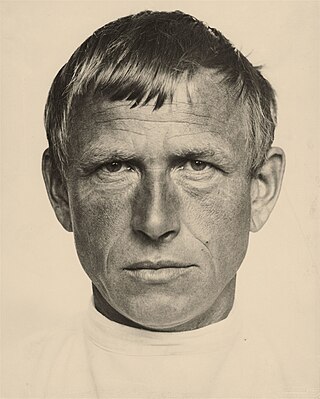
Wilhelm Heinrich Otto Dix was a German painter and printmaker, noted for his ruthless and harshly realistic depictions of German society during the Weimar Republic and the brutality of war. Along with George Grosz and Max Beckmann, he is widely considered one of the most important artists of the Neue Sachlichkeit.

Max Liebermann was a German painter and printmaker, and one of the leading proponents of Impressionism in Germany and continental Europe. In addition to his activity as an artist, he also assembled an important collection of French Impressionist works.

Erich Heckel was a German painter and printmaker, and a founding member of the group Die Brücke which existed 1905–1913. His work was part of the art competitions at the 1928 Summer Olympics and the 1932 Summer Olympics.
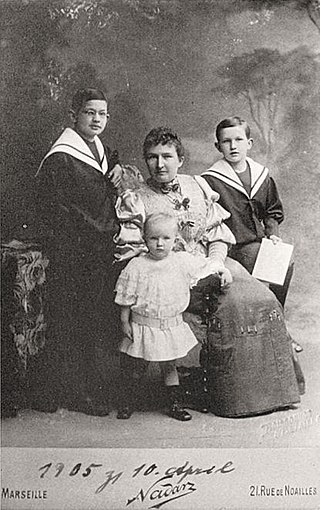
Charles Crodel was a German painter and stained glass artist.

Karl Christian Ludwig Hofer or Carl Hofer was a German expressionist painter. He was director of the Berlin Academy of Fine Arts.

Woldemar Friedrich was a German historical painter and illustrator.

Gabriel (von) Hackl was a German historicist painter.

Wilhelm Lachnit was a German painter who was primarily active in Dresden.
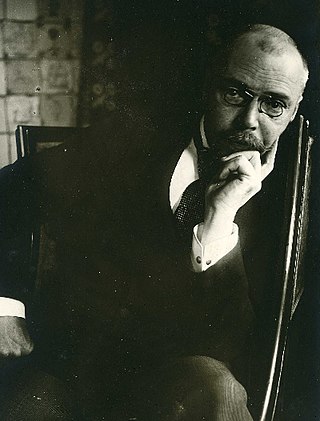
Paul Hoecker was a German painter of the Munich School and founding member of the Munich Secession

Carl Wilhelm Christian Malchin was a German landscape painter and art conservator.
Wilhelm Schmidthild was a German painter, graphic artist, illustrator and art professor. He chose as his field detailed documentation as an illustrator for botanical and zoological reference books and free compositions in the tradition of realism. He is also known as Schmidt-Hild.

Gustav Wunderwald was a German painter of the New Objectivity style, and a theatrical set designer.
Karl Joseph Maria Drerup was a leading figure in the mid-twentieth-century American enamels field. Trained as a painter, Drerup taught himself to enamel in the early 1940s, fusing glass to metal through a high-temperature firing process. Through his inventive, "painterly" approach to the medium, he advanced enameling to new levels of beauty, power, and expressiveness. Drerup's love of nature is apparent in every detail of his intimate woodland scenes, just as his depictions of humble workers in natural settings reveal his profound respect for humanity. A modest, self-deprecating individual, he exerted an enormous impact on the generation of enamel artists that emerged in the United States in the period immediately following World War II.

Adolf Friedrich Wilhelm Wachenhusen was a German landscape artist, draftsman and etcher. The focus of his work was on the countryside of his home region, Mecklenburg.
Karl Gatermann, typically referred to in art circles as Karl Gatermann the Younger, was a German painter, graphic artist, and set designer. He was the nephew of his namesake, Karl Gatermann, also an artist.

Fritz Roeber was a German illustrator, lithographer and history painter, associated with the Düsseldorfer Malerschule. As Director of the Kunstakademie Düsseldorf, he carried out some significant organizational changes.

Große Berliner Kunstausstellung , abbreviated GroBeKa or GBK, was an annual art exhibition that existed from 1893 to 1969 with intermittent breaks. In 1917 and 1918, during World War I, it was not held in Berlin but in Düsseldorf. In 1919 and 1920, it operated under the name Kunstausstellung Berlin. From 1970 to 1995, the Freie Berliner Kunstausstellung was held annually in its place.
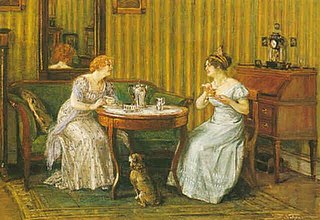
Karl August Friedrich Neuhaus, known as Fritz was a German genre and history painter; associated with the Düsseldorfer Malerschule.
Max Creutz was a German art historian and curator of the Museum für Angewandte Kunst Köln and the Kaiser-Wilhelm-Museum in Krefeld where he worked from 1922 until his death. In Cologne, in 1914 he was instrumental in the first exhibition of the Deutscher Werkbund, Deutsche Werkbundausstellung. In Krefeld, he succeeded in acquiring modern art exhibits, including works by Max Ernst, Wassily Kandinsky, and Alexej von Jawlensky. He included a substantial collection of art, crafts and design from the Bauhaus.
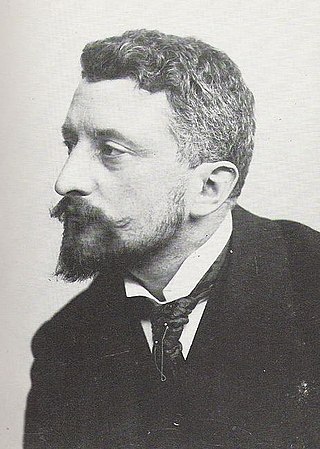
Willy von Beckerath was a German painter and art professor associated with the Düsseldorfer Malerschule. He was primarily known for portraits, landscapes and murals. From 1902, he was instrumental in the formation of the Deutsche Werkstätten Hellerau. He designed furniture and furnishings for churches. From 1907 to 1931, he was professor at the Staatliche Kunstgewerbeschule in Hamburg, where he decorated a new assembly hall with a monumental mural over three of its walls, Die ewige Welle.

















